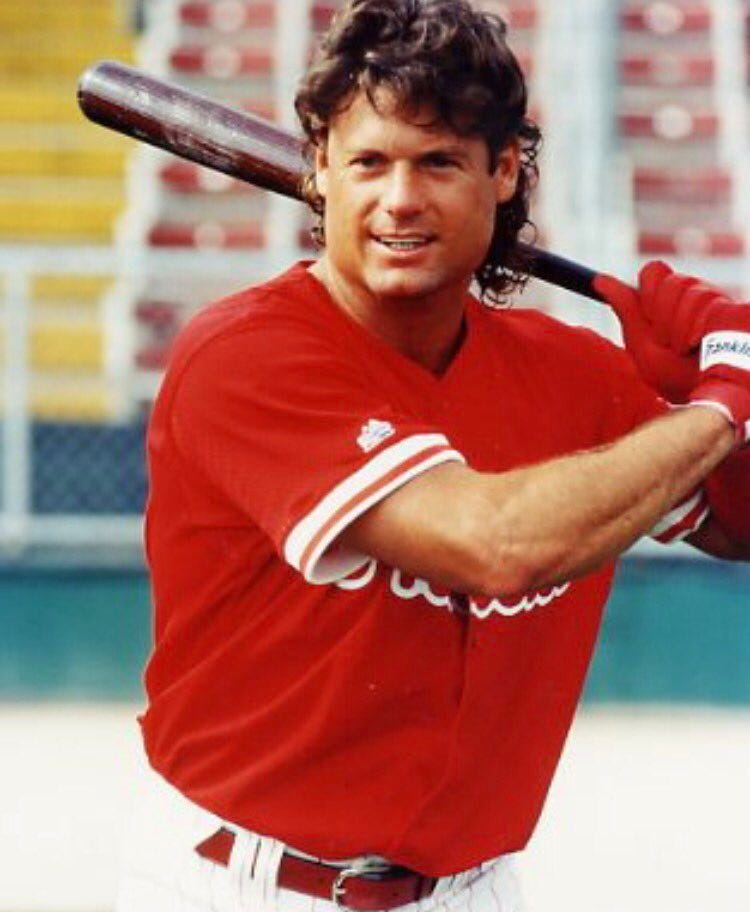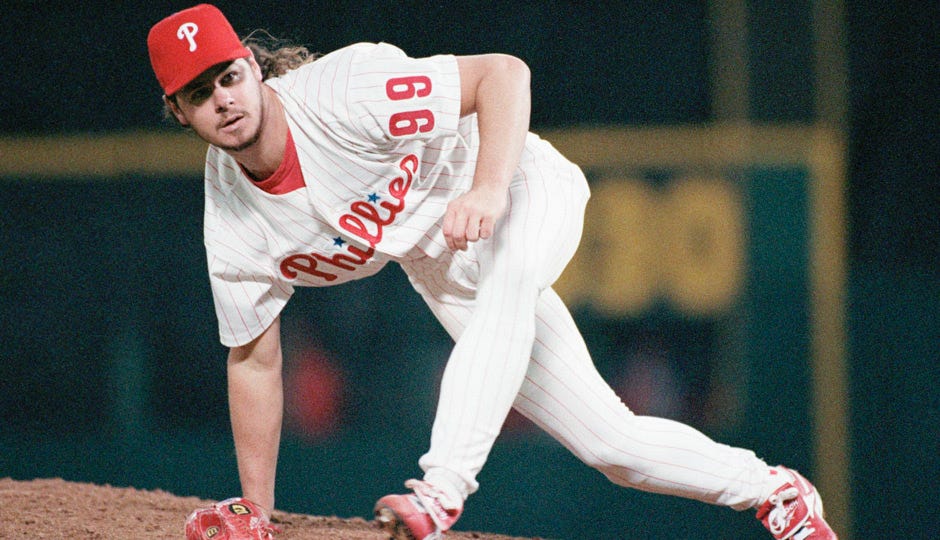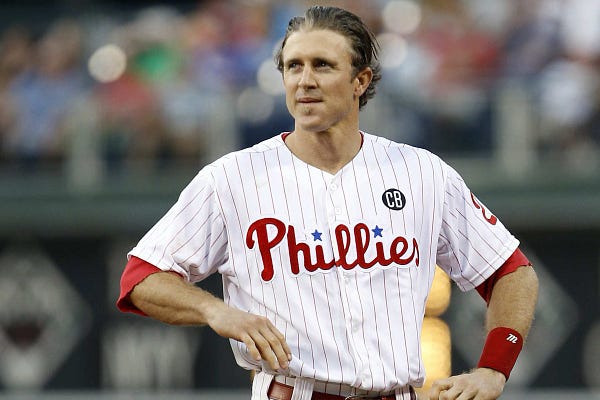So much has to go right for a team to win a championship. Talent matters, obviously. But that’s just the start. Over the course of 162 games, the team needs to stay healthy, catch a few lucky breaks, and have some players perform above any reasonable expectations. The manager’s decisions need to work out. The general manager needs to make savvy moves.
If the team clears those hurdles, it makes the postseason, where each of the teams facing off will have a winning percentage somewhere near 60%. (A 100-win team wins 61.7% of its games, while a 90-win team wins 55.6% of the time.) The odds of winning a playoff game are usually something close to a coin flip. Everyone is just trying to get four heads before they get four tails.
If a few key sluggers hit an October slump, the team is out of luck. If a pitcher’s arm gets tired one afternoon, it might all be over. An umpire’s bad calls or fan interference could make the difference. A team might play extremely well, at the level of an MLB-record 116-game winner expected to beat 71.6% of opponents… and then catch some of the bad breaks that make sure nobody wins 100% of the time. It could face a lesser team that just plays even better over the course of seven games.
Or it could run into Joe F’ing Carter.
Adding all this up, not much separates the almost-did-it Phillies teams of 1915, 1950, 1983, 1993, 2009, and 2022 from the beloved champions of 1980 and 2008. They were all amazing. So were the 100+ win teams of 1976, 1977, and 2011.
Many people feel like only championships matter, and that’s true in certain respects. But the years represented with white or blue flags above Citizens Bank Park aren’t radically different from the two years honored with red flags. The 1993 Phillies prove this point emphatically.
Now. Of course not every season deserves to be remembered fondly. Many ‘80s and ‘90s Phillies teams prove that point as well:
1981: First half, 34-21, 1st place. Second half, 25-27, 3rd place.
A work stoppage interrupts this season from early June through early August. MLB implements a playoff format that pits the Phillies (first half NL East champs) against the Expos (second half NL East champs). The Phillies lose that best-of-five series.
Mike Schmidt wins another Gold Glove and the NL MVP award, hitting .316 with a 1.079 OPS.
1982: 89-73, 2nd place. Cubs GM and old friend Dallas Green trades Ivan De Jesus to the Phillies for Larry Bowa and 21-year-old prospect Ryne Sandberg.
De Jesus bats .239 in ‘82 and never gets much better. Bowa is older now and plays about as well as expected.
Sandberg is an eventual 10x All-Star, 9x Gold Glover, 1984 NL MVP, and Hall of Famer.
Schmidt and Sandberg could have played in the same infield throughout the ‘80s. Oof.
1983: 90-72, 1st place. The Phillies beat LA in the NLCS before losing the World Series to Baltimore. Not bad for a team nicknamed the Wheeze Kids: Pete Rose is 42, Tony Perez is 41, Joe Morgan is 39, and Steve Carlton and Tug McGraw are both 38.
But Schmidt is still in his prime, hitting 40 home runs. And newcomer John Denny wins the NL Cy Young.
Young Darren Daulton makes a guest appearance for this team, hitting a single in three at-bats.
1984: 81-81, 4th place. Mike Schmidt keeps rolling, leading the team with a 7.0 bWAR. Second on the team with 4.1 bWAR is Von Hayes.
Hayes is a fascinating character in Phillies history. Cleveland traded him to the Phils on December 9, 1982 for five players (Jay Baller, Julio Franco, Manny Trillo, George Vukovich, and Jerry Willard) and he was quickly nicknamed “5-for-1.” While it wasn’t a terrible trade, Hayes didn’t live up to expectations. And when fans suffering through awful Phillies seasons went looking for a target, his nonchalant demeanor put a bullseye right in the middle of his long skinny back.
The 6’5” Hayes was a solid player, fast (48 stolen bases in 1984) with some pop (15 home runs per 162 over his career). He was generally one of the best players on the team. And he finished eighth in MVP voting one year.
But he was never good enough to win over the Philly Phaithful, posting a .770 career OPS and earning just one All-Star Game selection. Asked about the fans who booed him, he once responded, “They can do whatever they want. I’ll still be eating steak every night.”
Not the best way to win hearts and minds. But Von Hayes probably never stood a chance in Philly anyway.
1985: 75-87, 5th place. Schmidt hits 28 home runs, giving him 458 for his career. The countdown to 500 begins.
On June 11, Von Hayes becomes the first player in MLB history to hit two home runs in the first inning of a game. Phillies beat the Mets 26-7 that day.
Darren Daulton is back for 36 games with this team after spending 1984 in the minors. Daulton and Schmidt’s careers overlap for 7 years. Daulton also played on a Phils team featuring Pete Rose, and will finish his career on a Phils team featuring Scott Rolen. None of these guys are around, however, for Daulton’s finest moments as a Philie in 1993.
1986: 86-75, 2nd place. 36-year-old Schmidt wins his third MVP, leading the NL in home runs (37), RBI (119), and OPS (.937).
The Phillies release 41-year old Steve Carlton, struggling with a 6.18 ERA, in June. In his last start with the team he loses to Cubs rookie Jamie Moyer.
1987: 80-82, 4th place. Closer Steve Bedrosian wins a surprising Cy Young award with 40 saves and a 2.83 ERA.
On April 18 in Pittsburgh, Michael Jack Schmidt walks to the plate with 499 career home runs. Don Robinson throws a 3-0 fastball, and Schmidt crushes it deep into the left field stands.
1988: 65-96, last place. The first golden era of Phillies baseball is long gone, and Father Time is finally catching up with Schmidt. The bWAR leaders on this team are Kevin Gross (3.7), Greg Harris (2.8), and Phil Bradley (2.3).
1989: 67-95, last place. Schmidt retires on May 29. Many others probably should have retired as well. It’s an ugly, ugly season.
But. Darren Daulton takes over at catcher. And John Kruk, Lenny Dykstra, and Terry Mulholland join the team.
On June 11, the Pirates score 10 runs against the Phillies in the top of the first inning, and the Phils come back to win the game.
1990: 77-85, 4th place.
Dykstra is the Phils' best player and lone all-star, going .325/.418/.441 with 9 HR and 33 SB.
Mickey Morandini, Dave Hollins, Wes Chamberlain, and Tommy Greene join the team but don't play much.
Mulholland throws a no-hitter on August 15.
1991: 78-84, 3rd place. Jim Fregosi replaces Nick Leyva as manager after 13 games. The team adds Mitch Williams, who posts a 2.34 ERA in 69 games.
Tommy Greene throws a no-hitter on May 23.
1992: 70-92, last place. New bright red uniforms but the same old Phils.
Some players show promise, however. Daulton slashes .270/.385/.524 with 27 HR and leads the league with 109 RBI. New Phillies pitcher Curt Schilling (acquired in exchange for Jason Grimsley!) goes 14-11 with a 2.35 ERA and a 0.99 WHIP. Hollins hits 27 HR, Kruk posts an .881 OPS, and Dykstra bats over .300.
1993: 97-65, 1st place.
Statistically, an incredible team. Sometimes the stories about the personalities on this squad overshadow their objective greatness.
At the plate, they lead the league in hits, walks, and runs scored. They finish second in batting average, but first in on-base percentage and OPS (at a time when these metrics are still second-tier stats).
Leadoff hitter Lenny Dykstra contributes in all of those categories with a .305/.420/.482 slash line. He plays in 161 games, leads the NL in hits and walks, and leads the majors in runs. He also hits 19 home runs and steals 37 bases. It’s an MVP-caliber season, but he finishes second in voting to Barry Bonds.
Daulton and big Pete Incaviglia hit 24 home runs each. Incaviglia, a stereotypical power hitter with no glove, has the perfect platoon partner out in left field in the form of Milt Thompson. Here’s Milt with a game-saving catch on April 29.
Jim Eisenreich hits .318 with an .808 OPS over in right field. He splits playing time with the often-underrated Wes Chamberlain, who puts up an .813 OPS of his own.
John Kruk slashes an impressive .316/.430/.475 at first base. At second base there’s another timeshare, with left handed-hitter Mickey Morandini playing stellar defense and right handed-hitter Mariano Duncan providing an offensive boost. On May 9 (Mother’s Day), Duncan hits a 2-out, 8th-inning grand slam off Hall of Fame closer Lee Smith, and the Phillies stun the Cardinals 6-5.
Dave Hollins is the team’s starting third baseman, hitting 18 home runs and posting an .814 OPS. And shortstop is mostly a mix of Duncan and Kim Batiste (.734 OPS) until the Phillies call up 23-year-old Kevin Stocker from AAA. Expected to stabilize defense at the SS position, Stocker surprises on offense by slashing .324/.409/.417.
On the mound, Schilling, Mulholland, Greene, Danny Jackson, and Ben Rivera each win 12+ games. And Schilling, Mulholland, and Greene each throw seven complete games and two shutouts. Mitch Williams saves 43 games with a 3.34 ERA, while Larry Andersen (2.92 ERA) and David West (2.92 ERA) function as the team’s other primary relievers.
The manager is seasoned baseball veteran Jim Fregosi. When the Phillies clinch the division on September 28, Harry Kalas calls him the perfect manager for “this type of team,” and notes that nobody could handle the characters on the squad better. Fregosi seems to magically make the right moves all season long.
A number of factors make this team one of the most beloved in Philadelphia sports history. It’s partly the worst-to-first storyline, as the ‘93 Phillies add 27 wins to the ‘92 total. It’s also the hot start: the team wins eight of their first nine and never trails in the division, making the summer a rare season-long party. And it’s the pure entertainment value of a team scoring more runs than any Phillies team since 1930.
Most of all, it’s the cast of characters on this team. The movie Major League was released just a few years prior, and the character-based comedy might as well have been about this group. Dykstra is a hard-charging, tobacco-spewing menace. Kruk looks like he was plucked out of the stands. Williams is a real-life Ricky “Wild Thing” Vaughn. And, at the center of it all, is Daulton. He’s the team’s undisputed leader—respected, gritty, and sporting movie-star looks.
The Phillies defeat a heavily-favored, 104-win Braves team in the NLCS. Schilling is named the series MVP after posting a 1.69 ERA and striking out 19 in 16 innings.
In the World Series, they face the Toronto Blue Jays… You already know how it ends in Game 6. The magic runs out just two wins short, and Joe Carter breaks Phillies fans’ hearts with a walk-off home run against Mitch Williams.
The 1993 Phillies really could have won it all. They split two games in Toronto to open the series, and although Game 3 in Philly was a lopsided win for the Jays, the Phils led Game 4 14-9 after seven innings. Baseball Reference indicates there was a 99% chance the Phillies would win the game.
99% is not 100%. The Phillies lost, 15-14.
Even after the gut punch in Game 4, the Phillies had their chances. They won Game 5 and, after battling back from a 5-1 deficit, had a 6-5 ninth-inning lead and were in position to win Game 6.
As noted above, however, so much has to go right for a team to win a championship. In 1993, almost all those things happened. The talent was there. General Manager Lee Thomas put together an incredible group of players. Guys had career years. They stayed healthy. Fregosi pushed all the right buttons.
And still, it wasn’t enough.
Joe F’ing Carter.
Read Every Phillies Season Ever - Part 7 here.
Tweets of the week.
The Phillies received their 2022 NL Championship rings over the weekend. Tim Kelly captured the ovation for Rhys Hoskins:
Alex Carr with an amazing note on Jose Alvarado:
Bryson Stott has a nine game hitting streak to start the season. Jack Fritz is starting the countdown to 56:
Stott also had a walk-off hit on Saturday. Not a bad week. This tweet from Mike might be sacrilege but we’ll allow it:
Kyle Schwarber ran through Dusty Wathan’s stop signal on Easter Sunday and a new meme was born. Chris Mc’s contribution:
This week in 2008.
On April 3, 2008, the Phils debuted their cream alternate jerseys for the first time. No doubt powered by the new look, they came back from a 5-0 deficit to beat the Nats, 8-7. A bases-loaded walk by Jayson Werth scored Jimmy Rollins to end the game in the tenth inning.
The Phils then won the first game of a four-game series in Cincinnati, with Chase Utley hitting two home runs, but dropped the next two. Pat Burrell hit two home runs of his own in the series finale to help salvage a split. Brad Lidge was activated off the disabled list that week and earned his first save of the season in the game.
On April 8, Jamie Moyer picked up the win as the Phillies beat the Mets on the road. But Jimmy Rollins sprained his ankle and missed the April 9 game vs. New York, ending his consecutive games played streak at 230. The Phils lost, 8-2.
The 2008 Phillies’ record at the end of the week was 4-5.
Phillie you forgot about.
You might remember Wes Helms from his 2007 season, but did you remember that he was on the 2008 Phillies’ roster to start 2008? He was designated for assignment on April 2, and traded to the Marlins for cash considerations on April 5.
Helms slashed .246/.297/.368 with five HR for the Phils in ‘07.
Prize winners.
Tickets went out via the 2008philz twitter account this week because of timing issues, but there should be an autograph winner or two named in next week’s newsletter.
This is the section of the newsletter where I make you look at my dogs.
Thanks for reading and GO PHILS. There are a lot of games left to play.



















Go Phils! Another great read from John.
June 11, 1989: Pirates' broadcaster Jim Rooker famously says he'll walk back to Pittsburgh if the Phillies come back after being down 10-0 that first inning. He makes good on the promise later in October.
August 15, 1990, Mulholland's no-hitter: I'm visiting PA from Ohio and I make plans to go see the Phillies. My friends talk me into going to see Die Hard 2 instead. Damn.